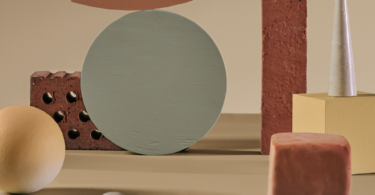By Trisha Harinath
Most people associate allergies with pollen, change of season and so on, but some of the greatest causes of allergies are those that are found within your home. The most common indoor allergens are dust mites, mould and pet dander, and reducing your exposure to these elements may help you lessen the symptoms associated with allergies.
Floor coverings
As carpets provide an environment that is conducive to the breeding of dust mites, floor coverings such as tiles or wooden floors are a much more favourable option if you suffer from serious allergies. According to www.essortment.com, removing wall-to-wall carpeting in favour of tiles, wooden floors or area rugs can do a great deal to remove allergens from the home.
However, if you would like to install wall-to-wall carpets, opt for low-pile materials.
Vacuum systems
According to Alan Baker of Vacumaid, the dust sucked up by Vacumaid Central Vacuum Systems, particularly the faecal matter of dust mites, is not blown back into the air, but filtered and vented outside, leaving your home relatively odour-free from this matter.
A Beam Central Vacuum System from Eco Lifestyles is also recommended by allergists, because of its ability to vent unhealthy air, allergens and dirt outside the home.
Vacuum cleaners with a HEPA filter are also a great way to remove allergens from the home. According to Steve Stewart of Creative Housewares – the official distributor of Dyson – HEPA is a type of filter, found in Dyson Allergy and Animal vacuum cleaners, that can trap a large amount of very small particles that other vacuum cleaners might simply reticulate back into the air of your home.
Air conditioning
Air conditioners should also be considered when trying to eliminate the allergens in your home, as they offer the latest in filter technology.
Air conditioners from Whirlpool, for example, include a three-step filtering system with three separate filters that work together to ensure that the air passing through the air conditioner is free from bacteria and unpleasant odours. These comprise an anti-dust filter that traps dust, a nanometer catalyst filter that filters out viruses, bacteria and harmful gases, and purifies dust and peculiar odours, making the air in the room fresh and the environment clean and healthy, as well as a germ-killing filter, which aims to provide a safe and clean living space by killing germs efficiently and trapping odours at the same time.
Air purifiers
An air purifier is a device that has been designed to remove harmful particles and contaminants from the air, and significantly improve indoor air quality. In order for air purifiers to be effective, they need to run continuously, since even though the air in a room has been purified once, it is still susceptible to becoming polluted again by all the pollution sources that can be found in a home.
Recently launched by the company, the Healthway EMF Air Purifier is an advanced and effective domestic air purification system, reportedly attaining 100% efficiency at removing harmful particles from the air at 0,3 micron in size (the most difficult sized particle to remove from the air and therefore the standard measurement for air purification efficiency).
Linen
Many people overlook the importance of linen, as using the correct type will help reduce allergies. “Your sleep accessories, duvets and pillows should be hypoallergenic in order to avoid developing or exacerbating allergies,” says Martin Chesno, CEO of Mulberry Silk Duvets.
“Silk does not hold mould or dust mites, and also keeps moisture away from the sleeper’s skin, making it completely hypoallergenic.
“Also, silk duvets do not need to be conventionally washed, but should rather be aired regularly, and this means that people with sensitive skin do not need to worry about the effects of washing powders and fabric softeners on their skin.”
If silk is not one of your favourites, then according to www.allergyescape.com, home owners can encase comforters and pillows in zippered allergen impermeable covers or wash them every two weeks in hot water. The website also advises home owners to encase mattresses and box springs in zippered allergen mattress covers, and wash all blankets, sheets, pillowcases and mattress pads in hot water every two weeks.
Dehumidifiers and damp-proofing
It is also important that owners keep the humidity in their homes below 50% in order to prevent mould growth, as mould and damp environments are prone to increase allergy-causing particles. www.webmd.com suggests installing dehumidifiers in basements and other areas of the home where mould tends to collect, and these devices should be cleaned every week in order for them to be effective and produce the best results.
In terms of damp, homes should be damp-proofed by professionals in order to reduce the harmful and unsightly effects that this problem causes, and as soon as you suspect that you have a damp problem, get it checked out and rectified as soon as possible.
By following these tips and using or installing products that are designed to reduce or eliminate allergens in the home, your visits to the doctor or pharmacist are bound to be less frequent.















Leave a Comment